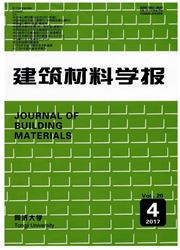

 中文摘要:
中文摘要:
为提高和改善橡胶沥青性能,探索不同生产工艺参数条件下橡胶沥青的改性机理,采用布氏黏度、红外光谱(FTIR)、凝胶渗透色谱(GPC)对橡胶沥青黏度及改性机理进行了研究.通过二次多项式逐步回归分析,建立了不同工艺参数条件下的橡胶沥青黏度模型,并得到橡胶沥青最优生产工艺参数.结果表明:橡胶粉掺量是橡胶沥青黏度的最主要影响因素,掺量越高,黏度越高;当温度较低时,橡胶沥青主要以物理反应为主,存在微弱的化学反应,而当温度较高时,橡胶沥青内部会发生强烈的物理化学作用,并在1 093.36cm-1和1 261.56cm-1处分别产生新的C—O—C和C—O—C官能团;相对于基质沥青,橡胶沥青大分子含量(LMS)明显增大,温度越高、橡胶粉掺量越大,LMS也越高,而搅拌速率对其影响不明显,且LMS与橡胶沥青黏度有良好的相关性.
 英文摘要:
英文摘要:
In order to improve the performance and to explore the mechanism of rubber asphalt under different reaction conditions.Viscosity,FTIR and GPC test methods were used to study the reaction parameters and the internal reaction mechanism of CRM binders.The viscosity model of different process parameters,which can be used to obtain the optimum parameters,was established by using quadratic polynomial regression analysis.The results show that CRM content is the main factor affecting viscosity of rubber asphalt,the viscosity increase as the CRM content increase.There is mainly physical reaction in rubber asphalt when the temperature is low,yet a weak chemical reaction also appears.However,rubber asphalt react violently when the temperature is high,which can generate new functional groups,namely C—O—C at 1 093.36cm-1and C—O—C at 1 261.56cm-1 respectively.The GPC tests show that LMS value of rubber asphalt increase significantly compared to the base asphalt.LMS increases as the temperature increases,so does CRM content.Besides,there is a good correlation between LMS and the viscosity of rubber asphalt.
 同期刊论文项目
同期刊论文项目
 同项目期刊论文
同项目期刊论文
 期刊信息
期刊信息
